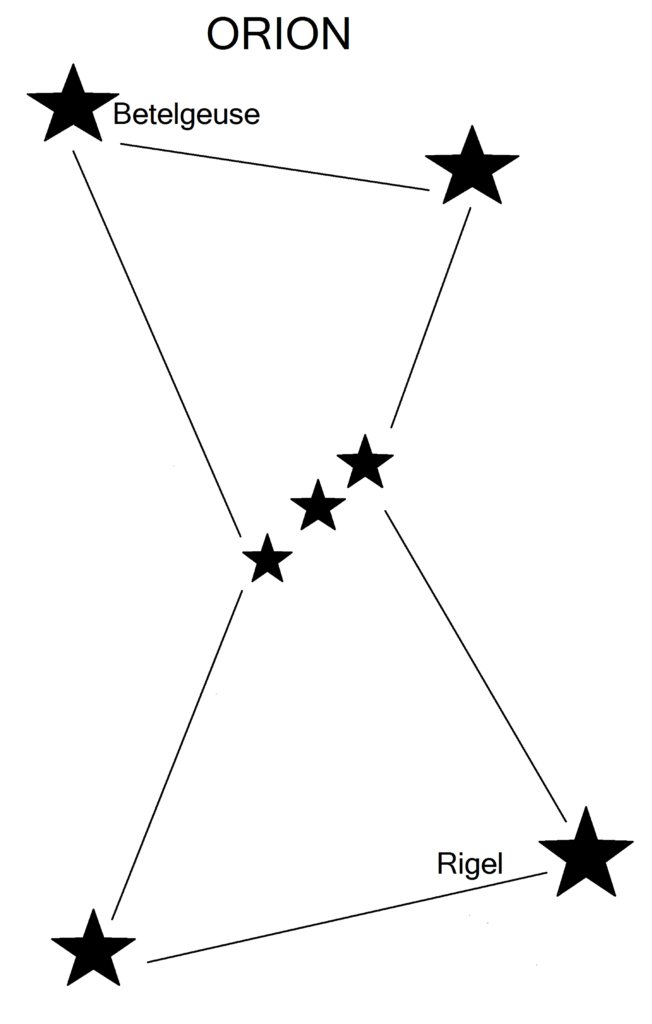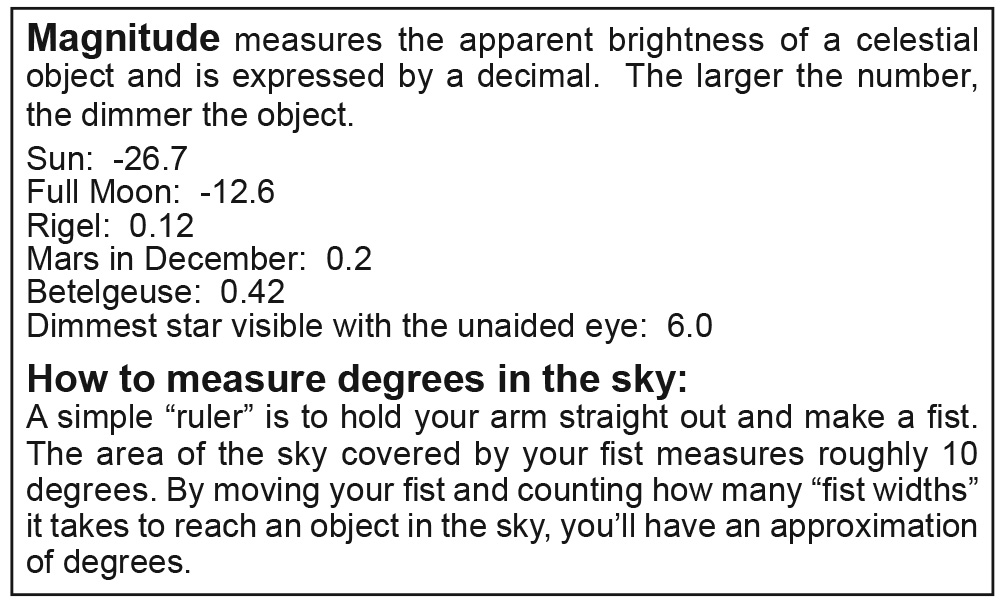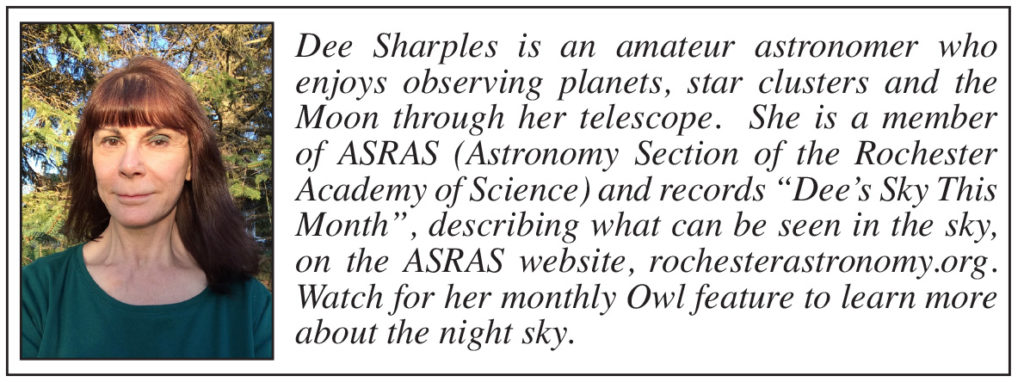The Night Sky: Seeing red in the December night sky
Plus Geminid meteor shower and winter solstice –
By Dee Sharples –
 December is an opportune month to compare the color of Mars, also known as the red planet, with a red supergiant star. Mars has been in the night sky for several months and is still with us this month although it’s much dimmer now. You can find it low in the southwest at 9:00 PM on the 1st of the month, 8:00 PM at mid-month and 7:00 pm at the end. Look for it about two fist-widths up from the horizon looking like a reddish-orange star.
December is an opportune month to compare the color of Mars, also known as the red planet, with a red supergiant star. Mars has been in the night sky for several months and is still with us this month although it’s much dimmer now. You can find it low in the southwest at 9:00 PM on the 1st of the month, 8:00 PM at mid-month and 7:00 pm at the end. Look for it about two fist-widths up from the horizon looking like a reddish-orange star.
Mars gets its color from the composition of the rocks on its surface which contain iron. Exposed to the environment, they oxidize (rust) and turn a reddish color. Wind blows the dust from these rocks across the planet and up into the atmosphere which actually makes the sky on Mars look pink. From a distance the whole planet takes on a reddish-orange hue.
Betelgeuse, a red supergiant star in the constellation Orion, also has a reddish-orange color but for a completely different reason. It’s a huge star, hundreds of times larger than our sun, nearing the end of its life and is expected to explode as a supernova within a million years. If Betelgeuse took our sun’s place in the solar system, its size would extend beyond the orbit of Jupiter, one of the outer planets.
Red giant stars are cooler in temperature which gives them their color. Betelgeuse is 5,800 F while a hotter star such as Rigel, also in Orion, is 19,000 F and shines a brilliant blue-white color. Our own sun is 10,000 F and would appear white from space. You can find Orion rising in the southeast sky at the same time Mars is getting ready to set in the southwest.
The Geminid meteor shower, one of the best of the year, peaks under a moonless sky in the early morning hours of December 14th. You will be able to spot sporadic meteors from December 4-17, but at the peak under a dark sky away from city lights, you’ll be able to see up to 120 meteors an hour. The meteors will appear to radiate from the constellation Gemini which will be almost directly overhead at 1:00 AM. But you won’t have to stare at Gemini to see the meteors – the best ones with long trails can be found in any direction about halfway above the horizon. Spotting meteors takes time and patience and especially in December, you’ll need to dress very warm!
The winter solstice occurs at 5:23 PM on December 21st. On that day, there will be only 8 hours 59 minutes of daylight. After that you can look forward to daylight lasting slightly longer by a few minutes each day.
 The seasons aren’t caused by how far the Earth is from the sun, but by the angle at which it revolves around the sun over the course of a year. Earth travels around the sun in an elliptical shape, not a perfect circle. During part of the year, Earth is closer to the sun than at other times, but surprisingly the Northern Hemisphere has winter when Earth is closest to the sun and summer when it’s farther away.
The seasons aren’t caused by how far the Earth is from the sun, but by the angle at which it revolves around the sun over the course of a year. Earth travels around the sun in an elliptical shape, not a perfect circle. During part of the year, Earth is closer to the sun than at other times, but surprisingly the Northern Hemisphere has winter when Earth is closest to the sun and summer when it’s farther away.
That’s because Earth is tilted on its axis by 23.4 degrees. It turns on its axis once every 23 hours, 56 minutes which causes day and night. Also as Earth orbits the sun once a year, our Northern Hemisphere tilts away from the sun in winter. We have less hours of sunlight and the sun is also providing less heat from its lower angle in the sky. The Southern Hemisphere, however, is tilted toward the sun and experiences its summer with increased heat and hours of sunlight.
Check out this website for a diagram and detailed explanation
– www.timeanddate.com/astronomy/axial-tilt-obliquity.html.
Illustration and chart by Dee Sharples
